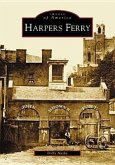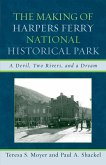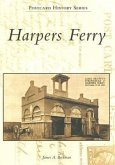Along with Jamestown and Yorktown, Colonial Williamsburg is known today as part of the Historic Triangle of Virginia, but all three of these old Virginian sites are known for vastly different reasons. While Yorktown was the scene of the final climactic battle of the American Revolution and Jamestown is remembered for being the first English settlement to survive in Virginia, Colonial Williamsburg is now best known as a bridge to the past. Williamsburg got its start as a fortified site, which was vitally necessary for English settlers to heavily outnumbered by nearby Native Americans, many of which were at times hostile. Known originally as Middle Plantation, the site served as the capital of the colony for much of the 18th century, and it bore witness to seminal events in the history of Revolutionary era America, including the Gunpowder Incident, which nearly coincided with the Battles of Lexington and Concord to the north. However, once the capital was again moved, Williamsburg lost much of its prominence, and by the end of the 19th century it was best known for hosting the College of William and Mary. As fate would have it, a major initiative during the 20th century would restore Williamsburg to a place of prominence, literally. In one of America's most ambitious building projects, efforts were undertaken to reconstruct the main parts of Colonial Williamsburg and restore it to a more original appearance, whether it was constructing new buildings with the old architecture or renovating colonial buildings. In doing so, Williamsburg was transformed from a sleepy (albeit historic) town into the biggest tourist destination in Virginia, and America's most famous living-history museums. In the 20th century, it was used to teach students about American history and even current events, and naturally, it is now a place full of exhibits and historical reenactments. Put simply, there is no place else in the country that can provide modern Americans with a sense of what life was like in the 17th and 18th centuries better than Colonial Williamsburg, which is what makes it so popular nearly 400 years after it was founded. Harpers Ferry, still perhaps best known as Harper's Ferry, is one of the most unique places in American history. Situated near the confluence of the Shenandoah River and Potomac River, it is one of the few places in the country that practically borders three states, and the location ultimately compelled George Washington himself to place a federal armory and arsenal there. Although Harpers Ferry was always a small, sleepy town, its industrial capacity to manufacture weaponry for the U.S. Army made it important, and ultimately ensured its legacy thanks to John Brown's raid. During the Civil War itself, the industrial capacity of Harpers Ferry was almost immediately destroyed to ensure that it could not help the enemy, but it still played a crucial role during the Maryland Campaign that culminated with the Battle of Antietam. As Robert E. Lee's Army of Northern Virginia invaded Maryland, Stonewall Jackson's command was sent to capture Harpers Ferry and seize supplies there. Jackson was ultimately successful, and his Confederates were just fast enough to finish their business in Harpers Ferry that they marched to Sharpsburg on the day of the Battle of Antietam to save the rest of Lee's army from potential destruction. In the wake of the Civil War, Harpers Ferry became more of a tourist destination, and it has since become a historic district under the auspices of the National Park Service. The restoration has also ensured that it became a living history museum of sorts, renovated to appear as it did historically while educating people about the important events in American history that happened there.
Hinweis: Dieser Artikel kann nur an eine deutsche Lieferadresse ausgeliefert werden.
Hinweis: Dieser Artikel kann nur an eine deutsche Lieferadresse ausgeliefert werden.








